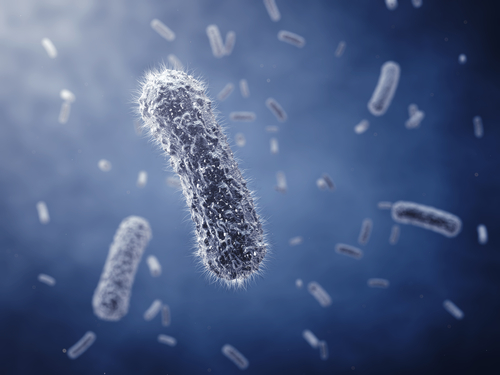
The genome of mysterious bacteria that lurk in hospital drains has been sequenced.
Low levels of the bacteria, known only as candidate phylum TM6, have been found in water systems around the world, yet because they could not be cultured in the lab, almost nothing was known about them.
The new research, detailed today (June 10) in the journal Proceedings of the National Academy of Sciences, could be the first step in understanding exactly what these bacteria do, said study co-author Jeffrey McLean, a microbial geneticist at the J. Craig Venter Institute in La Jolla, Calif.
"They're this dark matter of life," McLean said. "We keep seeing them, but we don't have any other information about them. We don't know what they're doing in the environment. It could range from being beneficial to being harmful."
Dark matter
Though known bacteria get all the headlines, all around us are a host of other microbes about which little is known. Scientists occasionally detect traces of DNA from these elusive bacteria, but know almost nothing about what they do and whether they are harmful.
In 1996, researchers first identified one such bug, which they dubbed Candidate Phylum TM6. The bacteria seemed to pervade the world's water systems.
Get the world’s most fascinating discoveries delivered straight to your inbox.
To identify the mysterious bacteria, McLean and his colleagues scraped gunk from a hospital sink drain. The goo contained the genes from a host of different bacteria, so the team used fluorescent tags to identify the DNA inside single cells.
Once they found single cells, they separated them and then broke the DNA from those individual cells into snippets. They then compared that DNA with known genomes for other bacteria, both to eliminate known bacteria and to reconstruct a genome for unknown species. [Unraveling the Genome: 6 Molecular Milestones]
Symbiotic bacteria
They were able to reconstruct about 90 percent of the genome for Candidate Phylum TM6. Based on the fact that the bacteria can't make its own amino acids, the building blocks that make up proteins, the team thinks the bacteria need a host to survive. TM6, they say, may live either on a single-celled microorganism called an amoeba, or on top of another bacterium that forms a biofilm, a slimy mix of bacteria that sticks to surfaces, McLean said.
Right now, they don't know if the TM6 bacteria are harmful or not, but other bugs that live inside amoebas are.
"Pathogens like Legionella and Francisella have been able to colonize humans because they first colonized an amoeba," McLean told LiveScience.
Now that they have the genome, and know, for instance, that TM6 needs a host to survive, the researchers hope to finally culture the bacterium and learn how it behaves.
The research is "a technical tour-de-force," said Moselio Schaechter, a bacteriologist at San Diego State University, who was not involved in the study.
Still, without culturing the bacteria, the researchers can't say much about its biology. For instance, a DNA sequence of a bacterium found in a sink drain is just a snapshot of the bacterium's life and doesn't say how long it was there or how common it is in that location.
Follow Tia Ghose on Twitterand Google+. Follow LiveScience @livescience, Facebook & Google+. Original article on LiveScience.com.

Tia is the editor-in-chief (premium) and was formerly managing editor and senior writer for Live Science. Her work has appeared in Scientific American, Wired.com, Science News and other outlets. She holds a master's degree in bioengineering from the University of Washington, a graduate certificate in science writing from UC Santa Cruz and a bachelor's degree in mechanical engineering from the University of Texas at Austin. Tia was part of a team at the Milwaukee Journal Sentinel that published the Empty Cradles series on preterm births, which won multiple awards, including the 2012 Casey Medal for Meritorious Journalism.


